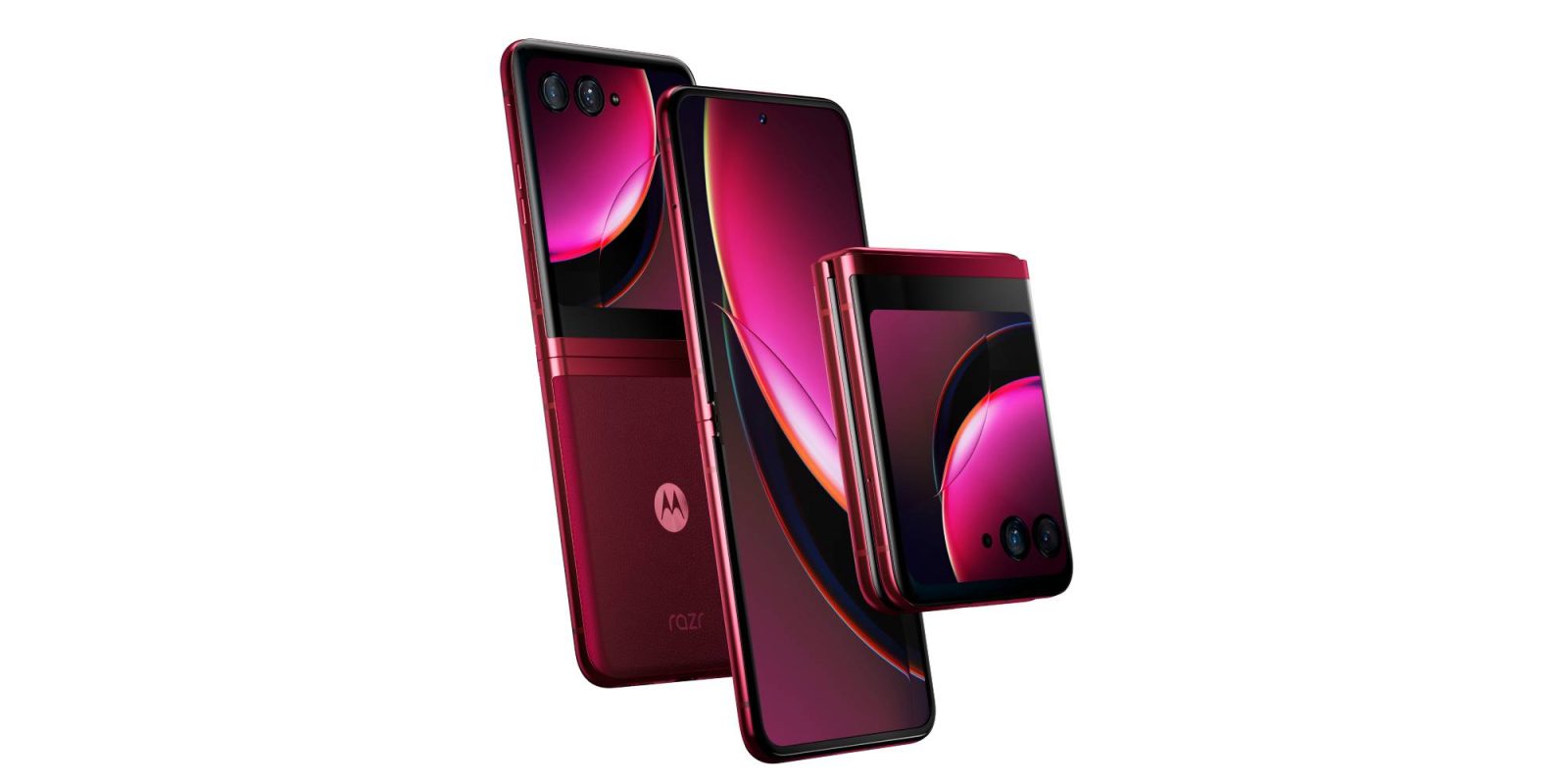The clamshell phone, once a ubiquitous symbol of mobile communication, has enjoyed a resurgence in recent years. Leading the charge is Motorola, with its reimagined Razr – a phone that evokes nostalgia while embracing cutting-edge foldable display technology. In 2024, Motorola returns with not one, but two foldable Razr options: the standard Razr and the feature-packed Razr+. Let’s see how these updated Razrs stack up and who they might be suited for.
Familiar Design, Modernized
Both the Razr and Razr+ retain the iconic Razr silhouette. The chunky base flips open to reveal a sleek, foldable display, instantly transporting you back to the early 2000s. But the similarities end there. The 2024 Razrs are crafted from premium materials like polished aluminum and Gorilla Glass, exuding a sense of luxury and durability.
The most notable difference between the two models lies in the size and functionality of the external display. The standard Razr features a respectable 3-inch external display, perfect for checking notifications, glancing at the time, or even composing quick replies without flipping the phone open.
The Razr+, however, takes the external display experience to a whole new level. It boasts a significantly larger 6.7-inch external display that transforms the phone into a miniaturized smartphone when flipped shut. This allows users to perform most tasks – from browsing the web to checking social media – without ever needing to open the phone.
A Tale of Two Displays: Inner Beauty
When flipped open, both Razrs reveal their true party trick – a large, foldable main display. This 6.9-inch OLED panel offers stunning visuals, vibrant colors, and deep blacks. The crease, a common characteristic of foldable displays, is still faintly visible, but it’s significantly less noticeable compared to previous iterations. This makes for a more immersive viewing experience, especially when watching videos or playing games.
However, a key differentiator lies in the refresh rate. The standard Razr features a 60Hz refresh rate, delivering a smooth viewing experience for everyday tasks. The Razr+, on the other hand, boasts a buttery smooth 120Hz refresh rate. This translates to noticeably smoother scrolling, animations, and overall responsiveness – a boon for gamers and those who prioritize a premium user experience.

Under the Hood: Power and Performance
Both Razrs are powered by the Qualcomm Snapdragon 8+ Gen 1 processor, a powerhouse chip that ensures smooth performance for even the most demanding tasks. Multitasking, running graphics-intensive games, and navigating through apps is a breeze on both phones.
However, the Razr+ offers a slight edge in terms of RAM. It comes with 12GB of RAM, allowing for better memory management and smoother multitasking compared to the standard Razr’s 8GB. While both phones offer ample storage options (128GB, 256GB, or 512GB), the extra RAM in the Razr+ might be appealing for power users.
Camera Capabilities: Capturing Memories
The camera department is where the Razrs differ the most. The standard Razr keeps things simple with a single 50-megapixel main sensor and a 13-megapixel ultrawide sensor. This setup delivers decent photos in well-lit conditions, but low-light performance might leave some users wanting more.
The Razr+, on the other hand, adopts a more versatile triple-camera system. It boasts a 50-megapixel main sensor, an 8-megapixel telephoto lens with 3x optical zoom, and a 13-megapixel ultrawide sensor. This combination allows for more creative photography, with the telephoto lens offering the ability to capture distant subjects in detail.
Both phones offer a variety of camera modes and features, allowing users to capture photos and videos that suit their needs. However, the Razr+ caters to those who prioritize a more comprehensive camera experience, offering greater versatility and zoom capabilities.
The Battery Life Question
The foldable form factor presents a unique challenge for battery life. Both Razrs pack in decently sized batteries, but the larger external display on the Razr+ might lead to faster battery drain. In moderate usage scenarios, both phones should comfortably last a full day on a single charge. However, heavy users might need to carry a power bank for extended outings.
Here’s a quick table summarizing the key differences between the Razr and Razr+:
| Feature | Razr (2024) | Razr+ (2024) |
|---|---|---|
| External Display | 3-inch | 6.7-inch |
| Display Refresh Rate | 60Hz | 120Hz |
Who Should Buy Which Razr?
The choice between the Razr and Razr+ boils down to your priorities and budget.
The standard Razr is ideal for you if:
- You prioritize affordability: The Razr is the more budget-friendly option.
- You value a familiar design: The smaller external display retains the classic Razr look and feel.
- Your needs are basic: You primarily use your phone for calls, texts, social media, and light browsing.
The Razr+ is the better choice if:
- You crave a premium experience: The larger external display practically turns the phone into a mini-tablet when closed, and the 120Hz refresh rate ensures buttery smooth performance.
- Photography is important: The triple-camera system on the Razr+ offers greater versatility and zoom capabilities.
- Multitasking is your game: The extra RAM in the Razr+ provides smoother performance for demanding users.
The Future of Foldables
The 2024 Razr and Razr+ mark a significant step forward for foldable phones. They offer a refined design, powerful performance, and innovative features like the large external display on the Razr+. While the technology is still maturing, these Razr models showcase the immense potential of foldables to transform the way we interact with our smartphones.
As foldable displays become more affordable and durable, we can expect even more innovative designs and functionalities to emerge in the future. Imagine a future where foldable phones seamlessly transition from compact companions to expansive mini-tablets, blurring the lines between smartphones and tablets. The Razr and Razr+ are a glimpse into this future, offering a taste of the exciting possibilities that lie ahead for the world of mobile technology.
















Add Comment